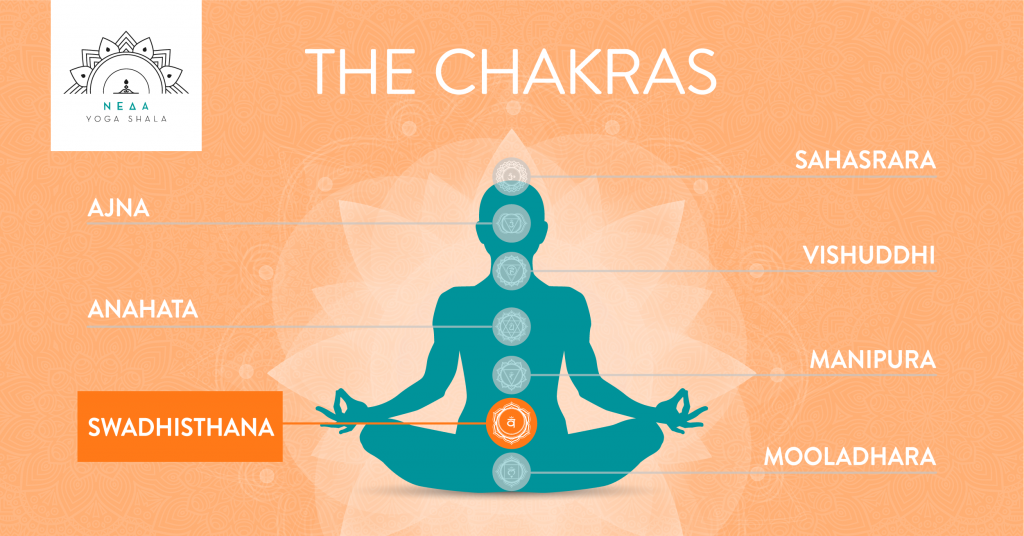
Swadhisthana Chakra
From the Mooladhara Chakra, which is connected to our instinct for survival or even better, to our decision to live, and, having established a stable, grounded base, we can proceed to the second energy centre. That centre is the Swadhisthana Chakra.
Swadhisthana Chakra is located somewhere between the coccyx and the sacrum, on the inner surface of the spine, very close to Mooladhara Chakra. The corresponding point on the front of the body (ksetram) is at the level of the pubic bone. The word Swadhisthana comes from the words Swa which means self/yours and Adhisthana which translates as place/abode/dwelling. We could translate it as the “abode of the self”.
As soon as a person resolves the issues related to survival, they move on to the phase of creation. We can see that by looking at a baby. When it is born, it is interested exclusively in receiving food, in order to feel safe and stand on its feet. But, it quickly transits into the phase where it starts playing and exploring. It uses its whole body and mind to crawl, to catch something that interests it, to put it in its mouth, to play and draw, to make crafts and to build sandcastles. The driving force of creation is desires, especially that of pleasure and the connection with the emotions that trigger these needs, all qualities associated with the 2nd center.
Taking desire as the starting point, Swadhisthana Chakra affects our relationship with food, drink, sexuality, etc. The element that corresponds to it is water, and by extension, on the physical body, it is related to the various liquids and to the organs responsible for their production, circulation and storage, especially the reproductive and urinary systems.
Its colour is orange, since it is positioned between the red and the yellow chakra, and inside its lotus, there is a half-moon, surrounded by six petals. The corresponding Bija mantra, the vibration of which helps us be in harmony with the sacred chakra is Vam.
The main emotion that can suppress the 2nd center is regret and guilt. However, when this chakra is in balance, it allows and triggers the person to enjoy life. To let oneself feel one's emotions deeply (but without becoming a slave to them), to live life freely and creatively and to have good contact with one's body and sexuality without guilt. To be relaxed/creative/happy. To create bonds and freely express one's feelings.
The transition from the first energy center that carries the stability of the earth to the second center that is connected to the movement of water requires us to get in touch with our feminine side without guilt. To let ourselves be free to feel and express what we feel without restrictions and in all possible ways.